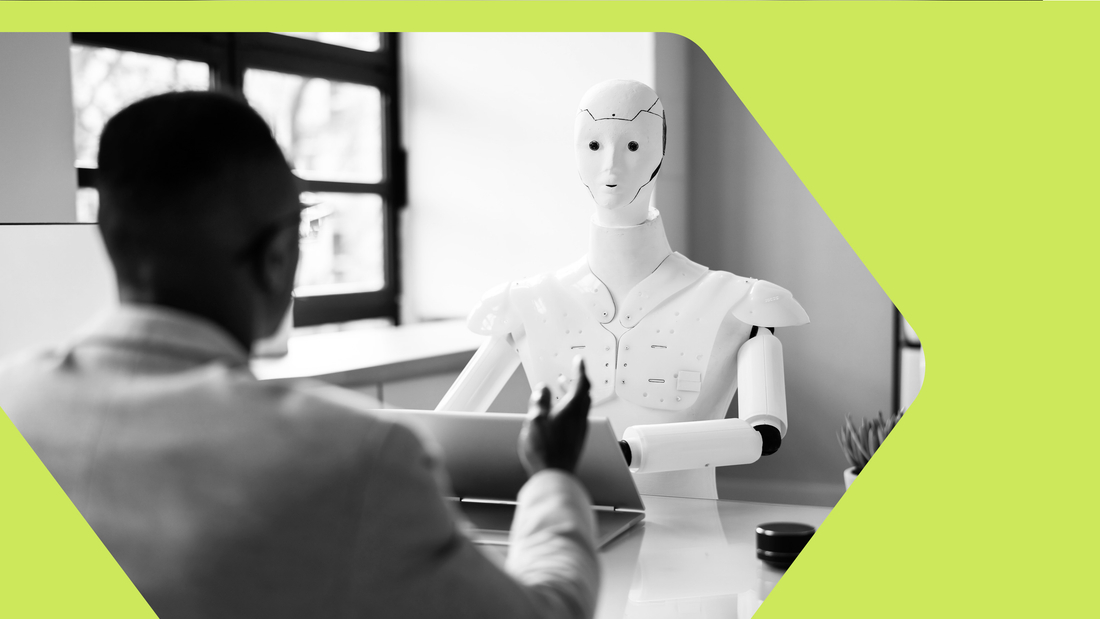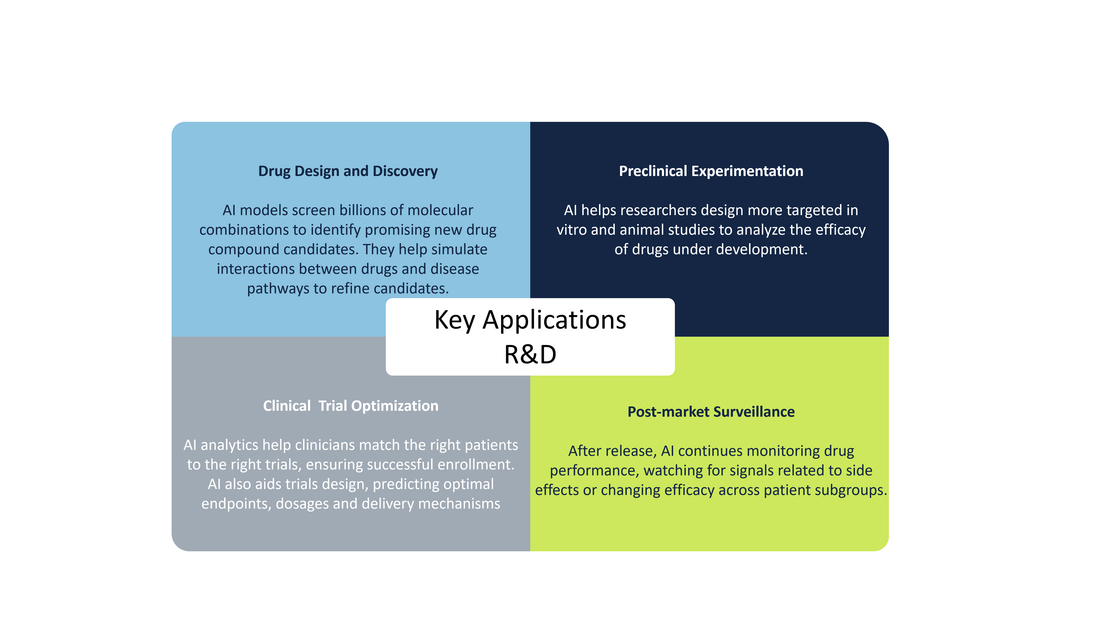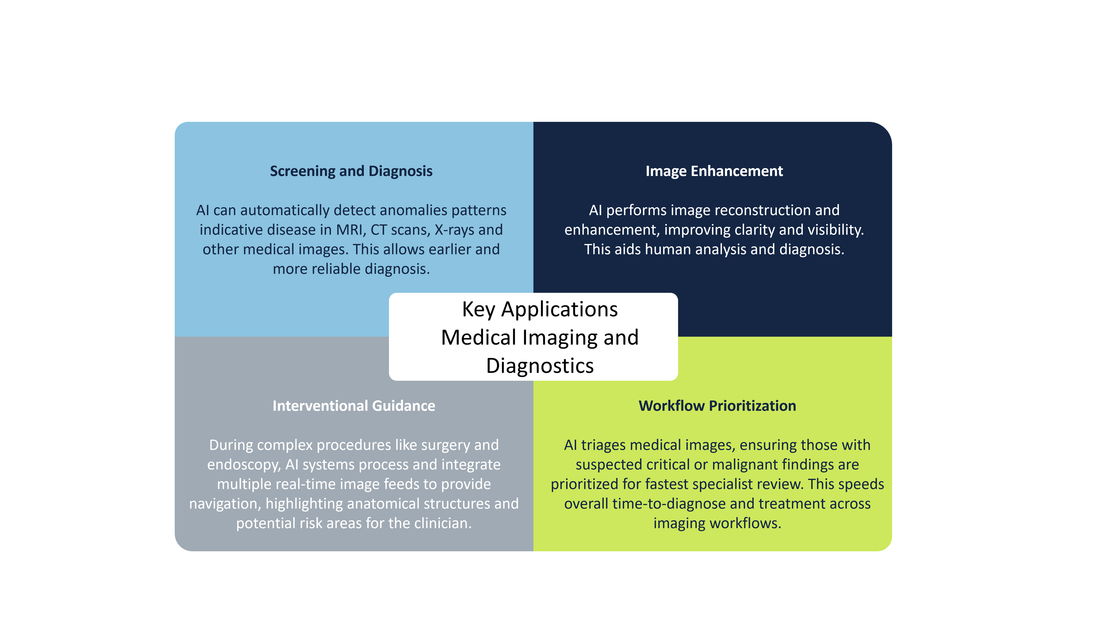More than Generative AI: Exploring the Many Ways AI is Transforming Life Sciences
After the ChatGPT-Moment, AI has become a hot topic, permeating nearly every facet of the healthcare ecosystem. Our authors Bart Reijs and Ralph Preisig explore key areas of AI application in Life Sciences in their article, focusing on use cases that deliver proven value beyond the hype.

OpenAI's recent unveiling of ChatGPT has propelled generative AI into the limelight. These powerful large language models (LLM), capable of crafting human-like text, have quickly captivated public interest. Overnight, they've sparked conversations about revolutionizing industries, from customer service to content creation and education, thanks to their remarkable ability in responding to natural language prompts. However, the excitement over generative AI risks overshadowing decades of AI advancement and adoption in vital sectors like healthcare and life sciences. While generative models may hold promise for the future, many other specialized forms of artificial intelligence have long been deployed to accelerate discoveries, personalize treatments, and improve patient outcomes. As AI continues permeating the healthcare ecosystem, it’s worth examining existing high-impact use cases as well as discussing promising areas of AI application in the life sciences. Which we will explore here, but also in our upcoming Tenthpin AI Point of View.
The Long History of AI in Healthcare and Life Sciences
Far from an overnight sensation, AI has been quietly powering innovations in medicine and biology for over 50 years. As far back as the late 1950s, AI researchers were already investigating how computers could assist clinical decision making and medical diagnosis. In the 1970s, MYCIN, an early expert system for diagnosing bacterial infections, highlighted AI’s potential to encapsulate specialized medical knowledge, though it would be decades before such systems saw real-world use.
With advances in machine learning and availability of vast biological datasets from the 2000s onwards, AI adoption in life sciences began accelerating rapidly. In 2011, IBM Watson memorably demonstrated an ability to understand natural language questions and hypotheses on the quiz show Jeopardy. While Watson was focused on trivia, the technology validated AI’s utility for searching and analyzing vast bodies of knowledge – an approach that would soon assist doctors in diagnosis and treatment decisions.
Around 2014, a revolution in AI called deep learning set the stage for a Cambrian explosion of AI innovation across healthcare. Deep learning systems trained on big datasets began outperforming other techniques at specialized prediction tasks like disease detection in medical images and genomic sequence analysis. Seemingly overnight, AI went from an academic field to one delivering tangible value across pharmaceutical research, medical imaging, diagnostic tests, hospital workflows and more.
Today AI permeates nearly every facet of the healthcare ecosystem. Let’s examine some major areas of AI application in the life sciences over recent decades, focusing on use cases delivering proven value beyond the hype.
Accelerating Pharmaceutical Research and Development
From informing drug discovery to optimizing clinical trials, AI is transforming biopharma research and development (R&D) across early discovery, preclinical and clinical stages. Key application areas include:

Top pharmaceutical companies have rapidly adopted AI, with AstraZeneca, Pfizer, Novartis and GSK announcing major partnerships and in-house initiatives over the last decade. In the 2019 survey EDELMAN AI Survey 87 percent of biopharma executives indicated to see a somewhat to very positive impact of AI now, only to be topped by Technology executives.
Enhancing Medical Imaging and Diagnostics
From spotting early indicators of disease to guiding interventional procedures, AI interpret and processes visual medical data better than the human eye. It delivers value across imaging modalities like radiology, pathology, dermatology, ophthalmology and endoscopy. Key applications include:

Globally, the AI medical imaging market is forecast to grow at 40 percent annually, reaching almost $4 billion by 2028. Key players adopting imaging AI include Philips Healthcare, GE Healthcare, Siemens Healthineers and Aidoc. Over a dozen AI imaging tools have received FDA clearance in recent years.
Personalizing Treatments
Precision or personalized medicine leverages data about a patient’s genetics, lifestyle and environment to customize prevention and treatment approaches for their unique needs. AI is accelerating personalized medicine by:

Personalized AI medicine enables truly Evidence-Based Care - treatments tailored not just to the condition but also the person. In April 2022, Sanofi announced a collaboration with Anthropic to develop new AI models powering personalized interventions for immune-mediated diseases. Such partnerships demonstrate the enduring value AI provides alongside new hype-driven technologies like generative models.
Mining and Analyzing Biological Data
Modern biotechnology now generates astronomical datasets across genomics, medical records, biobanks, scientific literature and more. For context – while the Human Genome Project originally took over a decade and cost nearly $3 billion, today an individual genome can be sequenced in hours for around $500. However, realizing value from the resultant explosion of genomic data depends heavily on AI capabilities to process, integrate and garner insights from vast, multidimensional biomedical data sources.
Key areas where AI drives biological and medical data value include:

In November 2021, DeepMind’s AlphaFold 2 AI system shared 3D protein structure predictions for nearly the entire human proteomic catalog publicly. By predicting shapes across over 200 million proteins, AlphaFold enables easier exploration of disease mechanisms, identifying new drug targets and antigens for vaccine development. This demonstrates immense value creation from AI even when not directly interfacing with patients.
Optimizing Health System Operations
While AI adoption in clinics and labs tends to make headlines, arguably its largest near-term impact is enhancing critical ‘back-end’ operations – analytics, scheduling, inventory and clinical workflows that enable health systems to deliver efficient, reliable and integrated care centred around the patient:

In 2021, Novant Health quantified over $1 million in cost savings annually from an AI workflow optimization system, with significant care quality and patient satisfaction improvements additionally. As health systems emerge from a tumultuous few pandemic years, such AI efficiencies could prove vital for financial sustainability.
The Next Wave of AI Innovation in Healthcare: Where the AI impact expands in the future
While AI adoption across healthcare has come a long way, life sciences remain early innings for advanced technologies. Several emerging capabilities could profoundly expand AI’s future health impact.
Conversational interfaces like chatbots usher in smarter, more personalized patient engagement models. As digital front doors to health systems, conversational AI across devices like smart speakers and chat apps enable access to information, remote monitoring and query resolution while capturing key signals from patient-entered data.
Simulations and digital twin models enable both personalized medicine and health system optimization through studying disease and intervention mechanisms in-silico. Detailed patient avatars would eventually receive care virtually to ‘pre-test’ therapies before deployment in human trials and clinics.
Swarm learning paradigms where multiple AI models converge their learnings on shared datasets facilitate faster, more scalable knowledge discovery across patient populations and scientific disciplines. This collective learning approach is well suited for continuous model improvement across evolving biological systems and environments.
Reinforcement learning, robotic automation and virtual reality environments would expand possibilities for surgical assistance, rehabilitation and coaching applications. Future smart hospitals may have robot nurses learning procedures, while VR enables patient recovery through gamification.
As emerging techniques enhance explainability and trust in AI predictions, clinical adoption would grow beyond narrow, risk-controlled applications into autonomous diagnosis and robotic surgery over the next decade. Meanwhile meta-learning approaches would enable models to adapt faster to novel pathogens, treatment regimens and rare diseases.
The Road Ahead: Where opportunities and benefits lie in Life Sciences
While much AI hype currently fixates on realistic but narrowly useful text and media generation, we cannot overlook decades of quiet AI progress now paying dividends across biomedicine and healthcare. As computing power continues growing exponentially, spurring new techniques like multimodal learning, the ultimate possibilities from AI helping solve systemic healthcare challenges remain boundless.
Yes, caution around AI is warranted – system errors, algorithmic bias, job losses and data privacy remain ongoing concerns for even proven applications. At the same time, the transformative upside for radically advancing diagnostic precision, clinical productivity and drug innovation at scale makes AI indispensable going forward. Through prudent regulation and governance, biopharma and healthcare sectors are poised to drive value from AI adoption for generations to come, even as the underlying technologies continue rapidly evolving. Addressing challenges from getting the appropriate training data sets to v alidating the performance of AI algorithms in drug personalization to ensure consistent results.
Tenthpin can guide life sciences companies with the use of Generative AI but also far beyond in leveraging SAP and related AI technology partners offerings to extensive technology assessments across the drug development and commercialization value chain, considering all subtypes and new emerging AI applications. Assessing AI in its broadest sense, leveraging existing platforms like SAP and considering the company specific use cases. Our upcoming publications on AI will give a first impression of what we can mean to get the most out of this promising technology.
Stay up to date with the latest #Lifeattenthpin #LifeSciences #Pharma #MedDevices #Biotech #Digitalforlife #Thoughtleadership #Medical Technology #AnimalHealth news by following us on Instagram #LifeAtTenthpin Facebook Tenthpin and our Tenthpin LinkedIn corporate page.


